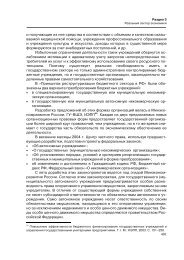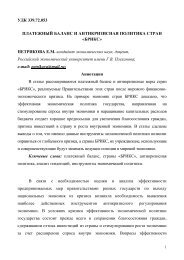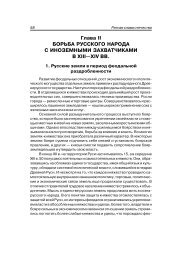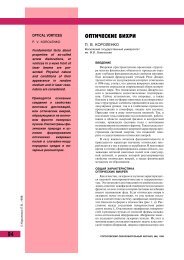Ensuring Strategic Stability in the Past and Present:
Ensuring Strategic Stability in the Past and Present:
Ensuring Strategic Stability in the Past and Present:
Create successful ePaper yourself
Turn your PDF publications into a flip-book with our unique Google optimized e-Paper software.
In <strong>the</strong> course of <strong>the</strong> conflict, all <strong>the</strong> armed forces of <strong>the</strong> two sides were on <strong>the</strong> alert. The fight<strong>in</strong>g <strong>in</strong><strong>the</strong> region lasted for more than two <strong>and</strong> a half months <strong>and</strong>. As Vladimir Sotnikov rightly notes, itwas actually a “large military confrontation between <strong>the</strong> two long-st<strong>and</strong><strong>in</strong>g geopolitical adversaries.”94In 2001 <strong>and</strong> <strong>the</strong> first half of 2002, India <strong>and</strong> Pakistan repeatedly approached <strong>the</strong> nuclear threshold.In that respect, <strong>the</strong> terrorist attack on <strong>the</strong> Indian Parliament <strong>in</strong> December 2001 was a verystrong impetus. It happened notwithst<strong>and</strong><strong>in</strong>g <strong>the</strong> fact that both countries were at that time part of<strong>the</strong> antiterrorist coalition led by <strong>the</strong> United States. In a number of <strong>in</strong>stances, both sides urged <strong>the</strong>use of nuclear weapons.A nuclear exchange between India <strong>and</strong> Pakistan could have ramifications even beyond <strong>the</strong> deathsof millions of people <strong>in</strong> South Asia, which would be a very serious shock to all mank<strong>in</strong>d, <strong>in</strong>clud<strong>in</strong>gRussia. With a high degree of probability, this would result <strong>in</strong> heavy radiological fallout on<strong>the</strong> territory of Russia <strong>and</strong> o<strong>the</strong>r countries of <strong>the</strong> former Soviet Union, with severe after-effects onpeople’s lives, <strong>the</strong> environment, <strong>and</strong> agriculture.The evaluation of <strong>the</strong> possible ecological <strong>and</strong> climatic consequences of a use of nuclear weaponsby India <strong>and</strong> Pakistan aga<strong>in</strong>st each o<strong>the</strong>r should be based on <strong>the</strong> assumption that, as prom<strong>in</strong>entRussian expert Alex<strong>and</strong>er G<strong>in</strong>sburg notes, <strong>the</strong>y would be considerably different from large-scaleatmospheric changes <strong>and</strong> subsequent ecological disasters, which had been studied <strong>in</strong> <strong>the</strong> 1980s aspart of <strong>the</strong> analysis of <strong>the</strong> nuclear-w<strong>in</strong>ter phenomenon. These differences result from <strong>the</strong> mounta<strong>in</strong>ousterra<strong>in</strong> <strong>and</strong> high density of <strong>the</strong> population <strong>in</strong> <strong>the</strong> region of possible use of nuclear weaponsby both sides. Meanwhile, <strong>the</strong> aggregate yield of <strong>the</strong> nuclear warheads possessed by both sidesis relatively low, compared to that of <strong>the</strong> former USSR <strong>and</strong> <strong>the</strong> United States historically, <strong>and</strong> thatof <strong>the</strong> Russian Federation <strong>and</strong> <strong>the</strong> United States today. Accord<strong>in</strong>g to <strong>the</strong> estimates of G<strong>in</strong>sburg,<strong>the</strong> aggregate TNT-equivalent yield would be about 1 megaton. As <strong>the</strong> author concludes, despite<strong>the</strong> peculiarities of <strong>the</strong> situation <strong>in</strong> <strong>the</strong> region, “it may be conv<strong>in</strong>c<strong>in</strong>gly assumed that local <strong>and</strong>regional atmospheric <strong>and</strong> environmental effects may be much more detrimental to <strong>the</strong> life of <strong>the</strong>population <strong>and</strong> <strong>the</strong> demographic situation <strong>in</strong> <strong>the</strong> region than <strong>the</strong> direct damage caused by nuclearexplosions.”No experts doubt that <strong>in</strong> <strong>the</strong> past 10 to 12 years, Iran has established a technological basis forcreat<strong>in</strong>g both civilian <strong>and</strong> military missiles. Many experts have long ago noticed that <strong>the</strong> seriesof medium-range missile tests conducted by Iran could make military <strong>and</strong> strategic sense only ifsuch missiles were equipped with weapons of mass destruction (WMD), primarily with nuclearwarheads.There is no sense <strong>in</strong> equipp<strong>in</strong>g ballistic missiles of that class with conventional warheads—<strong>the</strong> ratiobetween <strong>the</strong> cost of a destroyed target <strong>and</strong> <strong>the</strong> cost of <strong>the</strong> missile itself would be very low. Theavailability of such missiles without nuclear warheads <strong>in</strong> <strong>the</strong> military arsenal would have zero effectfrom a political po<strong>in</strong>t of view, <strong>and</strong> would hardly streng<strong>the</strong>n <strong>the</strong> country’s status. And it shouldbe once aga<strong>in</strong> emphasized that <strong>in</strong> many <strong>in</strong>stances, status can play a decisive role <strong>in</strong> <strong>the</strong> acquisitionof nuclear weapons <strong>and</strong> <strong>the</strong>ir delivery vehicles by a particular country.Belfer Center for Science <strong>and</strong> International Affairs | Harvard Kennedy School 47
















